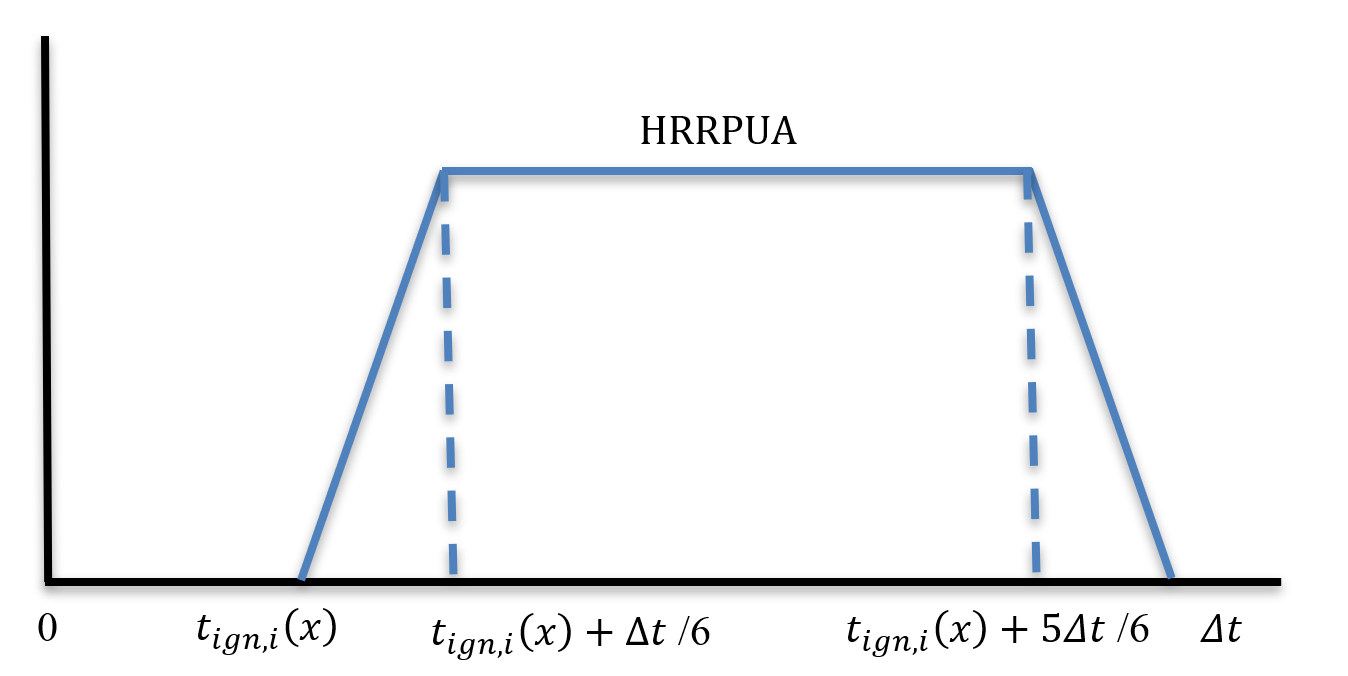FLASH CAT Methodology
FRI3D uses the Flame Spread over Horizontal Cable Trays (FLASH-CAT) method, where applicable, to determine secondary combustions and fire propagation through cables. FLASH-CAT is an empirical method derived from controlled fire experiments conducted by the National Institute of Standards and Technology (NIST). For this empirical method to provide results approximating the NIST experiments, several conditions must be met as follows:
- The cable trays are horizontal and stacked vertically with a spacing of less than 0.45 m (18 in.)
- The cables burn in the open (i.e., they are away from walls and well below the ceiling)
- The cables are not exposed to elevated temperature sources except for the ignition source below
- There are no barriers separating the trays, and the tray tops and bottoms are open
- The cables are not protected with coatings, armor shielding, or thermal blankets of any kind
- There is a fire beneath the lowest tray
- Each tray has at least a single row of cables or roughly 25% of the NRC limit.
The FRI3D modeler is expected to model secondary combustibles following those limitations. The results of secondary combustible simulation will not be accurate if there are several fire sources beneath a tray, for example. It will not give realistic results if the raceways are relatively close to walls or ceilings as well. The FLASH-CAT method divides a cable into several spatial segments. A cable segment combusts at a certain time when the fire propagates to that segment. When it does, the heat release rate per unit area (HRRPUA) for that segment follows a time profile shown in Figure 5 below. It reflects the dynamics of fire growth and decay. HRR starts to increase from \left(x\right)$ until reaching the peak HRRPUA at one-sixth of \Delta t later, remains stable until , and then decreases linearly to zero.

Figure 5. Time history of the local HRRPUA for each raceway grid. Once all the HRRPUA profiles for each raceway grid have been calculated, the total HRR of the secondary combustible is calculated by summing all the local HRRPUA profiles from all raceways as follows:
Where is the total secondary combustible’s HRR, is the HRR of the initial fire, W is the raceway’s width, ” is the local HRRPUA, and t is the discrete observation time. After the HRR profile from the secondary combustibles is obtained, FRI3D adds it to the initial fire’s HRR and reruns the fire simulation. To use the FLASH-CAT methodology, position a raceway at a reasonably close distance above a fire source as shown in the screenshot below. Add cables inside the raceway which will serve as the secondary combustible source. As a side note, the horizontal fire propagation rate in the FLASHCAT methodology is relatively slow (i.e., in the range of 1–3 meters per hour. Cable raceways are typically long, and thus, it will require a long simulation time of several hours to estimate the complete HRR profile of the secondary fire. For that reason, the secondary combustion analysis is not done for the whole length of the raceway in this training example.
